Here’s a short photo essay this week while I work on presentations and posts on water for farming and food.
Deeper posts take time to research and write. Your paid subscription helps me provide these posts as a service and keep them free for all to read.
The bluff that I see from my window across Useless Bay is called Double Bluff. Useless Bay was named by the Wilkes expedition of 1841 for its shallow draft and frequent storms due to its southern exposure. Here they are on the T sheet from the 1872 US Coast Survey of Washington Territory. Useless Bay is right in the middle, and Double Bluff is to the top left between Useless Bay and Mutiny Bay. We have great place names. Double Bluff Brewery recently leased space from Useless Bay Coffee, and my breakfast blueberries were from Mutiny Bay Blues!
The area we’re exploring today is the southwest facing bluff on the lower side of the point at the top left. It’s one of my favorite places to walk or kayak. On a clear day, it offers views of three volcanoes and the Olympic Peninsula, North Cascades, and Seattle.
We’re here to take a look at erosion—the power of water.
For the beach to live, the bluff must die.
In last week’s post, we mentioned that the island is composed of glacial till, a mixture of sand, gravel, clay, and a few rocks, left over from the last glaciation. At the shoreline bluffs, the material erodes. Rain soaks the ground, saturating it until it slides. Wave action during winter storms washes it away. While the material ultimately goes to further extend the shallows of Useless Bay, some of it first replenishes the nearby beaches through longitudinal drift, the bluff and beach together forming a drift cell. For the beach to live, the bluff must die.
Heavy rains since last winter’s storms have caused slides along almost the entire length of the bluff that have yet to be undercut by wave action.
Here’s a view of a slide from my kayak, this one showing the beginnings of wave undercutting on an older slide with a newer slide running over it. I once saw a small slide happen from the kayak!
Here’s a frontal view of a recent slide. I’m glad I wasn’t underneath!
Useless clay?
There are couple of areas where the horizontal strata in the sediment have been folded by earthquakes. Here is one such, which also shows a layer of clay deposited later. Underneath the clay is a hole where the sandy material has washed out.
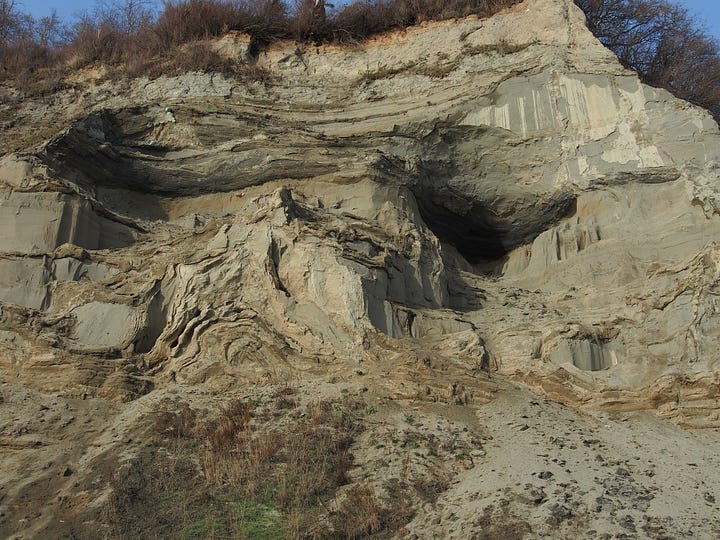
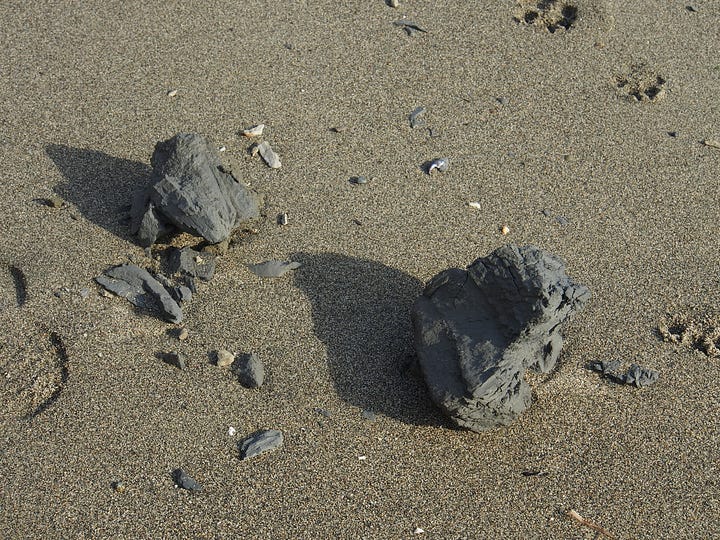
Lumps of clay wind up on the beach. Some people use it for pottery, but it’s not very good. It has too much grog (sand). Useless clay?
Harder to spot in the bluff are thin dark layers. They look like wood but are actually layers of compressed leaves from the bottom of a post glacial lake.
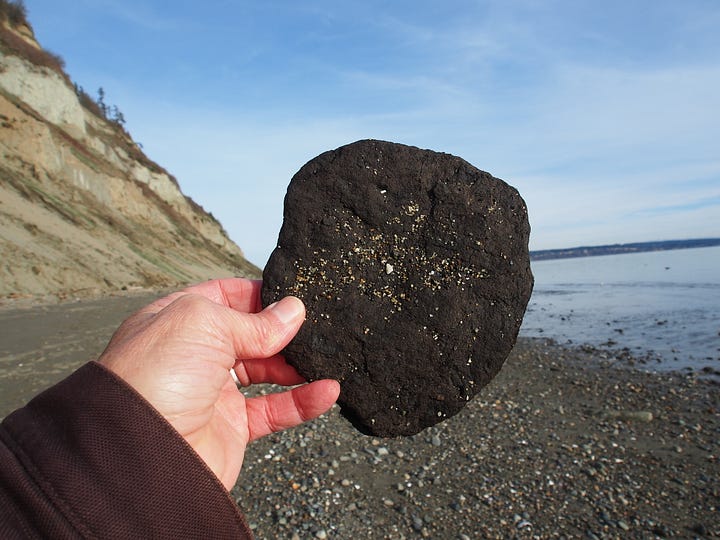
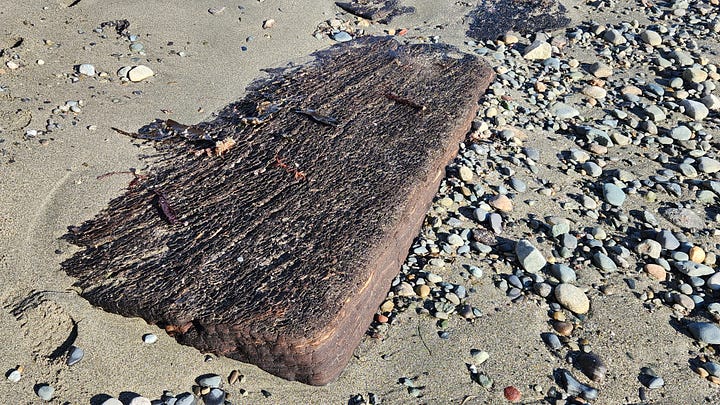
The bluff is receding at the rate of a couple of feet a decade. The beach wants to move back in parallel. Unfortunately, the beach now has houses on it. Natural erosion, enhanced by sea level rise, is going to be a challenge for these, as it is for houses at the top of, or in some cases, underneath, some of the bluffs. This particular bluff is protected as a park. As it recedes, it will continue to provide a place to walk and a place for abundant wildlife.
Thanks for joining me on a beach walk. I’ll leave you with a couple more gratuitous pictures of Tahoma.
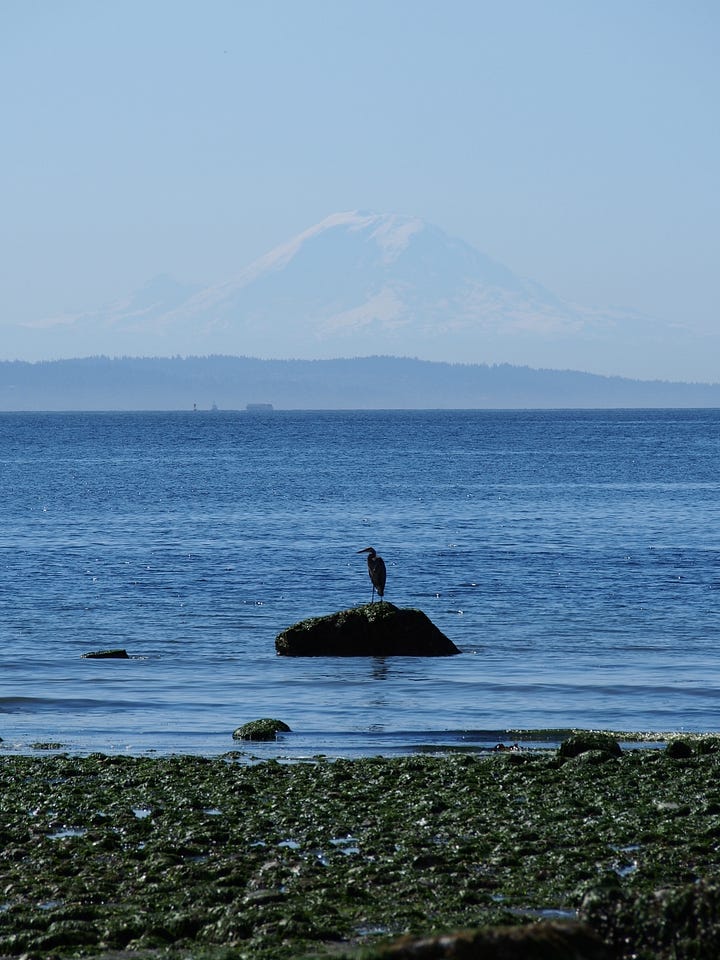
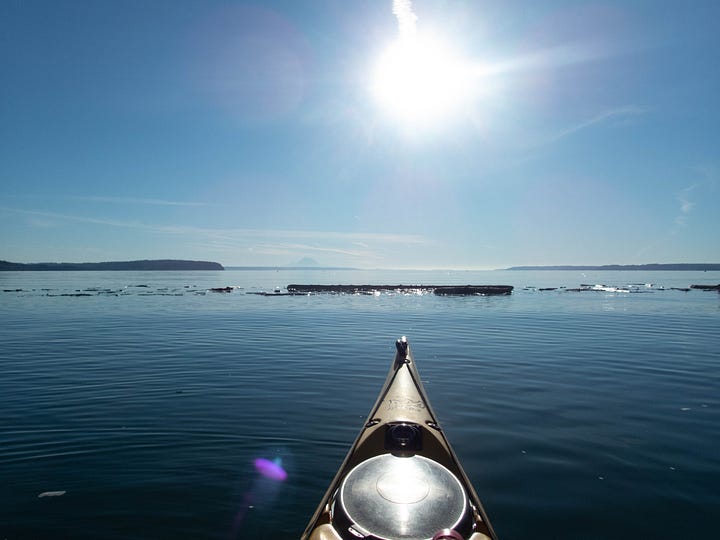
Thanks as always for reading. I skipped the voiceover this week, as this was a photo essay. I’ll be back next week with a regular post about water for farms.





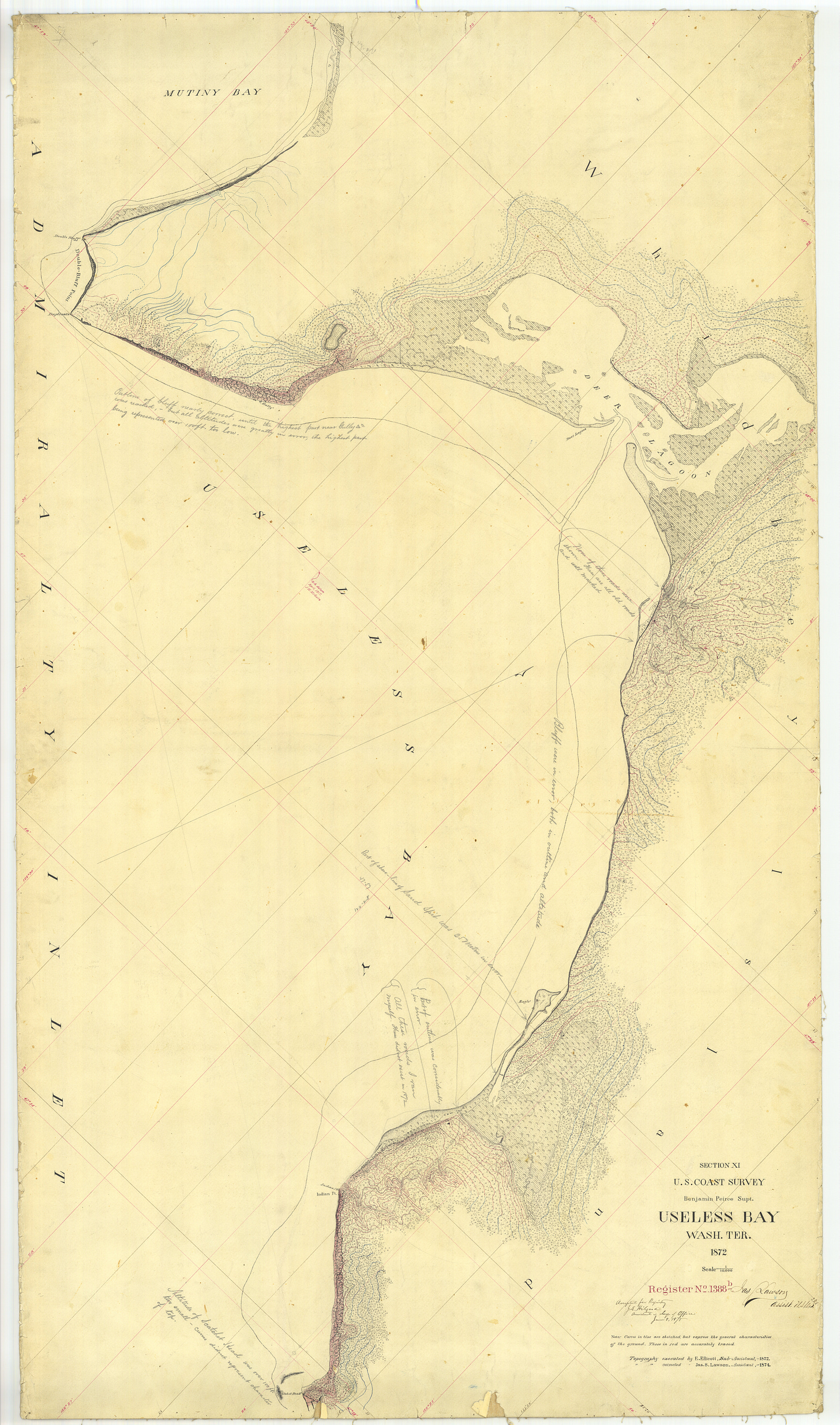
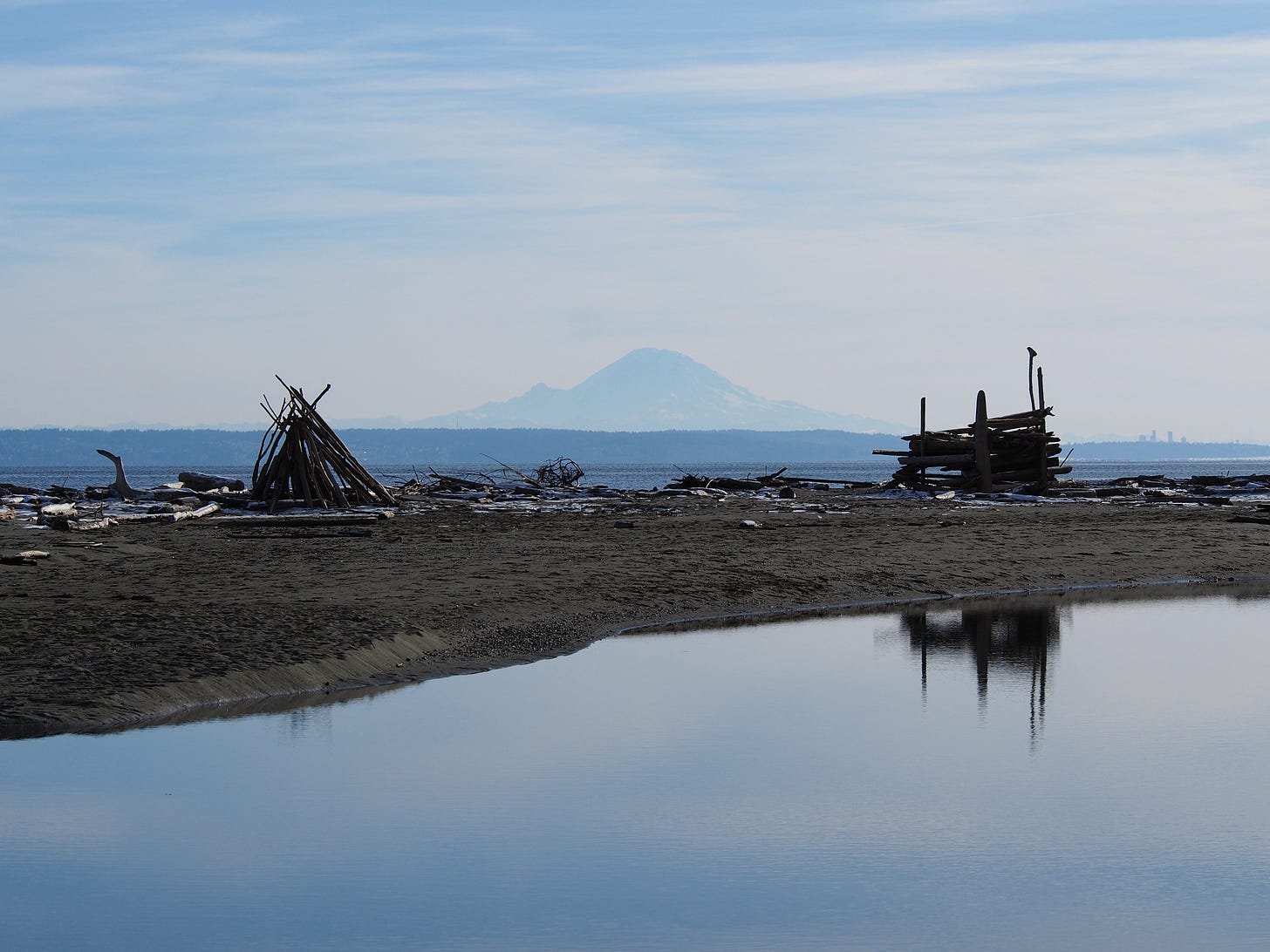
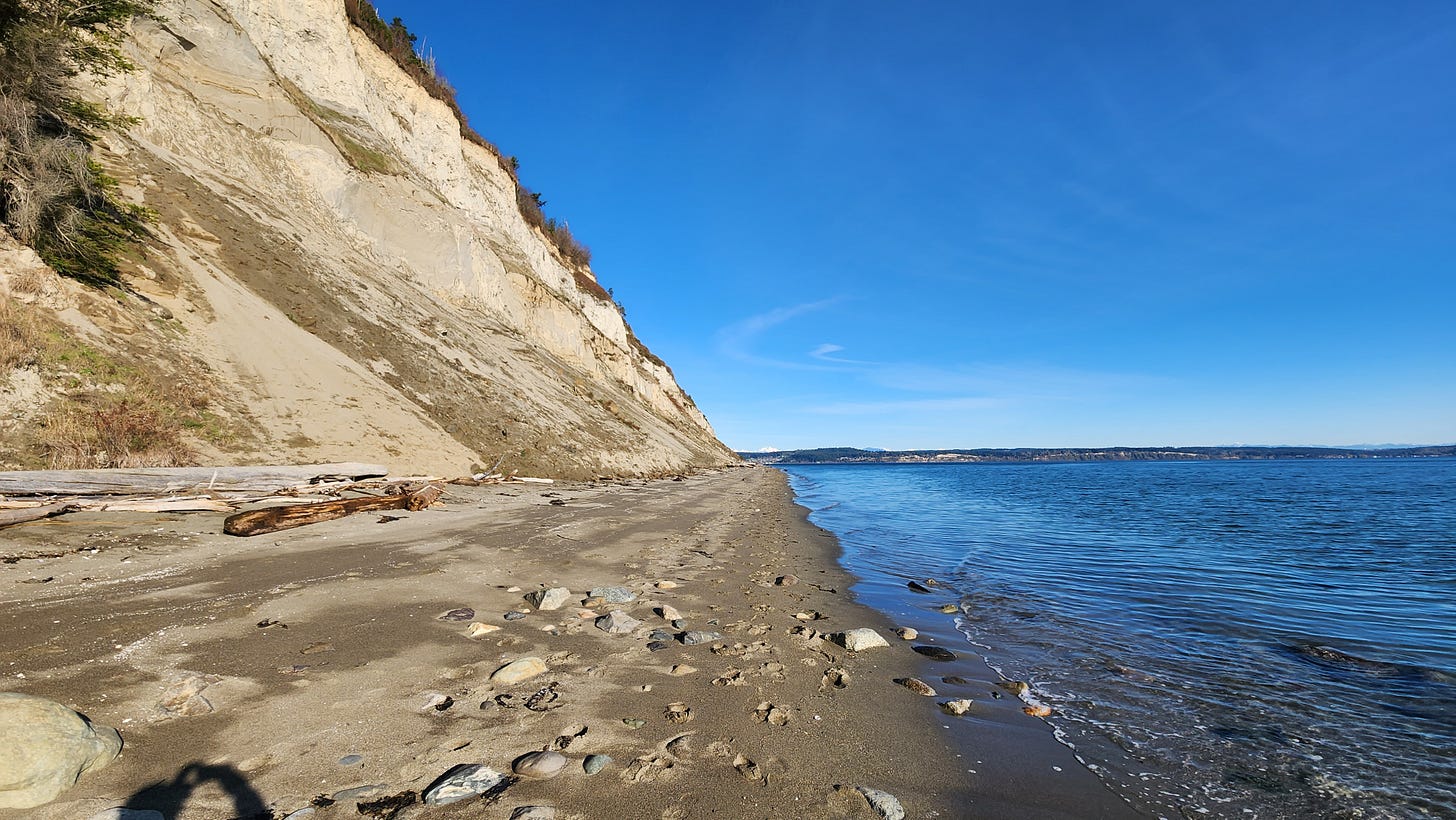
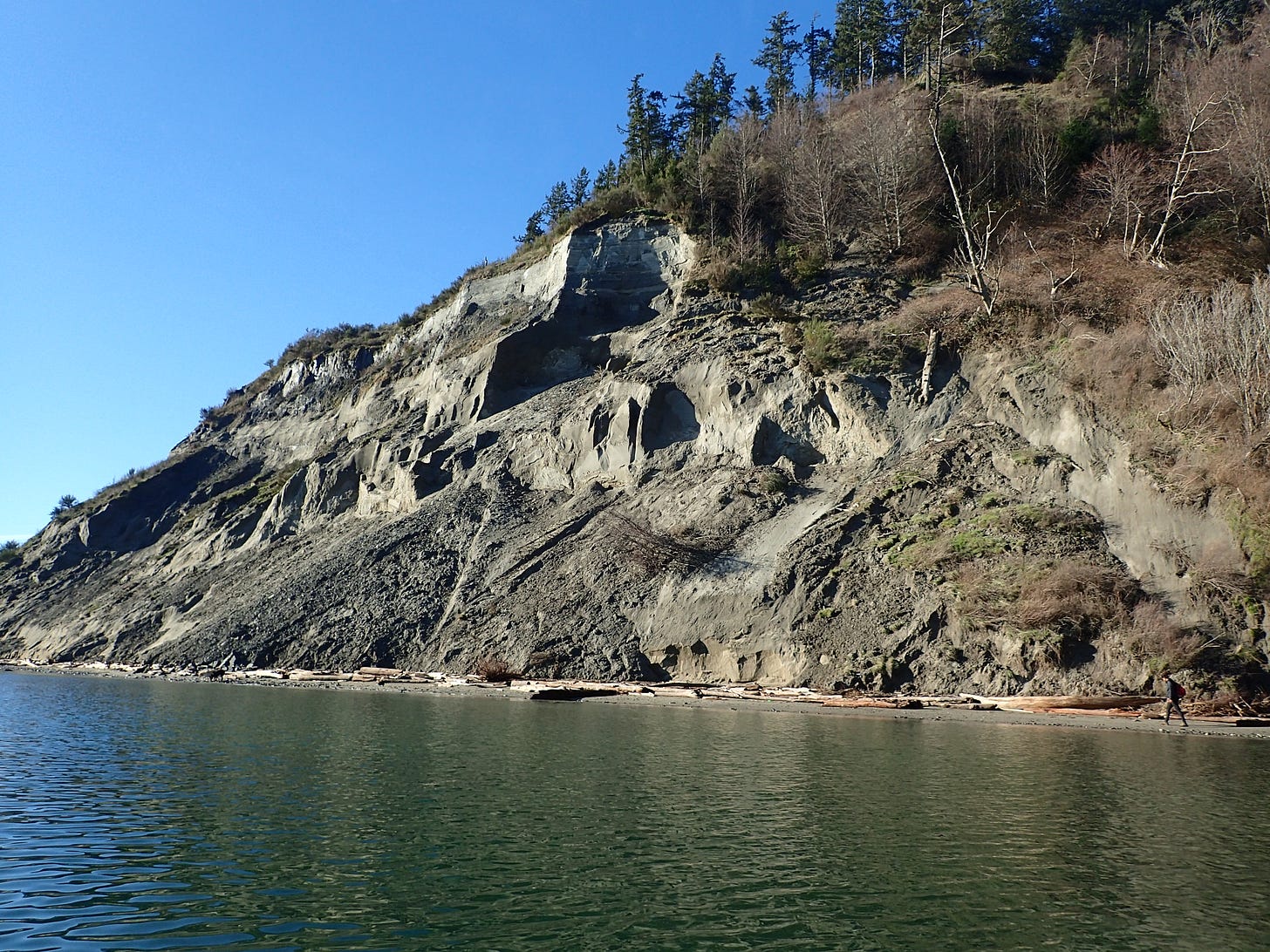
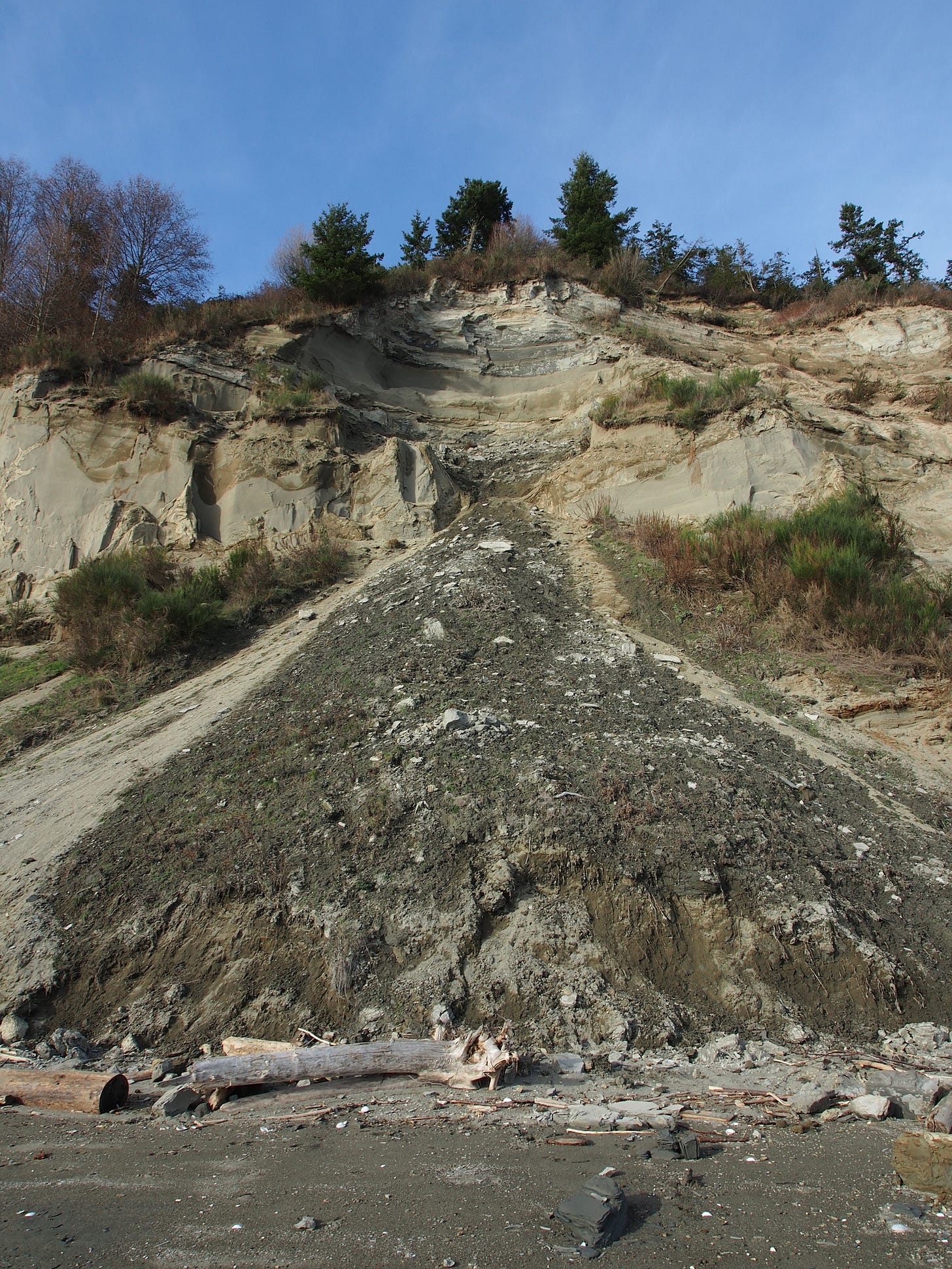
Thank you for the education and the beauty.
How was your conversation with EPA guy about Chevron Deference ( if you can say)?
The photos are beautiful and the post is very informative though giving a forewarning of future slides.
Landslides, as we call them in Philippines, are catastrophic in densely-populated areas.